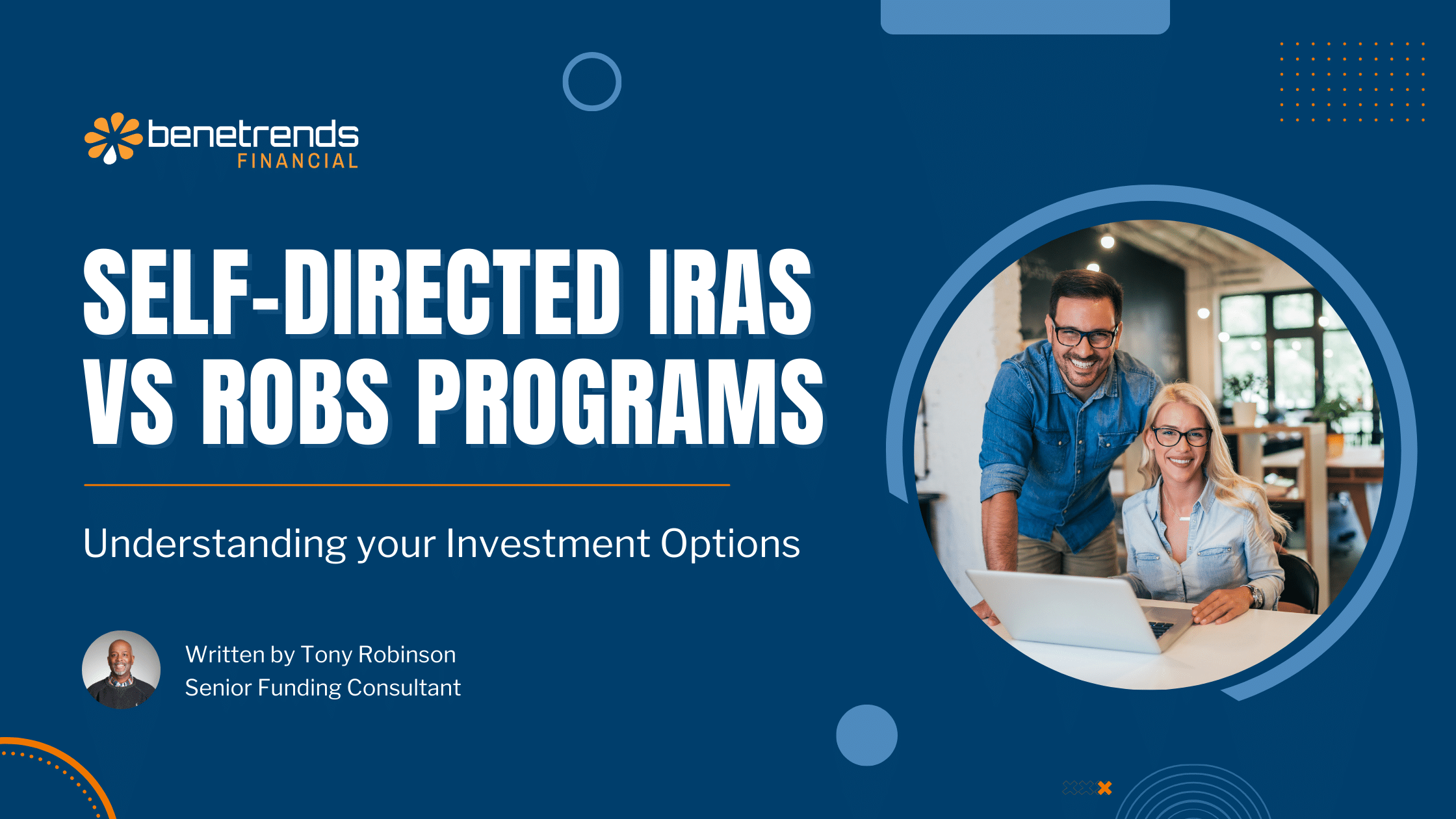When considering how to leverage retirement funds for business or investment opportunities, two popular options often come up—Self-Directed IRAs (SD-IRAs) and ROBS programs (Rollovers as Business Startups). While they both allow individuals to utilize retirement savings in alternative ways, they serve vastly different purposes. If you’re evaluating which strategy aligns with your goals, this guide will help clarify the distinctions and benefits of each approach.
What Is a ROBS Program?
A ROBS (Rollovers as Business Startups) program is designed for individuals who want to actively own and operate a business. Here’s how it works:
- Requires the establishment of a C-corporation and a qualified retirement plan.
- Allows individuals to use retirement funds to buy or start a business or franchise.
- The business owner must be a W2 employee actively involved in operations.
- Profits and revenues are handled at the corporate level and can be used for personal income.
- Ideal for individuals who want to run a business and draw a salary.
What Is a Self-Directed IRA (SD-IRA)?
A Self-Directed IRA (SD-IRA) is an investment vehicle for those looking to invest passively in alternative assets. Here’s what you need to know:
- Established with an LLC and an individual retirement account.
- Commonly used for real estate, lending, cryptocurrency, precious metals, tax liens, and crowdfunding.
- The investor cannot be personally involved in managing the investment.
- All profits must flow back into the IRA—they cannot be used for personal income unless taken as a distribution.
- Ideal for individuals who prefer passive investment opportunities.
Key Differences Between ROBS and SD-IRAs
One of the biggest differences between a ROBS and an SD-IRA is the business structure. A ROBS program requires the formation of a C-Corporation and a qualified retirement plan like a 401(k) or Profit Sharing Plan, while an SD-IRA is set up with an LLC and an individual retirement account.
Another key distinction lies in the type of investments they allow. A ROBS program is designed for active business ownership, allowing an individual to use their retirement funds to purchase or start a business or franchise. In contrast, an SD-IRA is used for passive investments, such as real estate, lending, cryptocurrency, precious metals, tax liens, and crowdfunding.
Additionally, the level of investor involvement varies significantly. A ROBS investor must be an active W2 employee in the business they invest in, while an SD-IRA investor cannot be personally involved in managing their investments.
When it comes to profits, a ROBS business handles revenue and income at the corporate level, allowing the owner to draw a salary and earn personal income. With an SD-IRA, however, all profits must flow back into the IRA and cannot be used for personal income unless taken as a distribution.
How to Choose Between ROBS and an SD-IRA
The biggest question to ask when deciding between a ROBS and an SD-IRA is: How involved do you want to be in your investment?
- If you want to own and operate a business while drawing a salary, a ROBS program is the right choice.
- If you prefer passive investments where earnings remain in your retirement account, an SD-IRA is the better option.
Why Expert Guidance Matters
Many people researching ROBS and Self-Directed IRAs online come across misleading or incorrect information. To make the most informed decision, it’s crucial to consult with an experienced company like Benetrends. Our team specializes in retirement funding strategies, ensuring that you fully understand your options and choose the investment path that aligns with your financial goals.
Both ROBS programs and Self-Directed IRAs offer unique ways to utilize retirement funds, but they cater to different investment styles. Whether you want to actively run a business or passively grow your wealth, understanding the differences is key. Contact Benetrends today to explore the right retirement funding solution for you.
Contact Tony: https://www.benetrends.com/tony-robinson/

